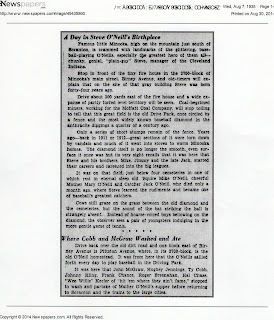Three Men Entombed in the National Mine
Body of Michael Kelly Was Found by Rescue Party
at 11:15 o’clock Last Night - Large Area
Affected
Thirty-five Men in that Part of Mine When
Caving
Began Yesterday Morning - Many Had Narrow
Escapes
Rescue Crews Working with Feverish Haste to
Reach Those Still Entombed
Three men were entombed, one man killed, three
were injured, several others had miraculous escapes from death, and twenty
acres of land were dropped in South Scranton in a squeeze of gigantic proportions
in the Devil’s Eyebrow of Dunmore No. 2 vein of the National mine of the Glen
Alden Coal Company yesterday morning.
Seventy-five men attacking the mass of debris,
coal, rock and earth from three different angles had not reached the missing
men up to an early hour this morning. W.W Inglis, President of the Glen Alden
Company, is personally supervising the work of the rescuers, and it is hoped
that the men will be found alive.
Michael Kelly of 2412 Winfield Avenue, a
company hand, was killed. His body was found lying at a passing branch in the
main gangway at 11:45 o’clock last night. A small scar on the head, probably
received when he was thrown down by the force of the explosion, was the only
mark on the dead miner’s body, according to reports from the rescuers.
With the exception of three entombed men, all
other employees in the area affected by the cave had been accounted for,
company officials said. The missing men are: Edgar Hughes, 1123 Ambers Street,
Section foreman; Al Reese, 1014 Snyder Avenue, electrician and widely known
sprinter and athlete; and John Barrett, 2106 Cedar Avenue, company hand.







